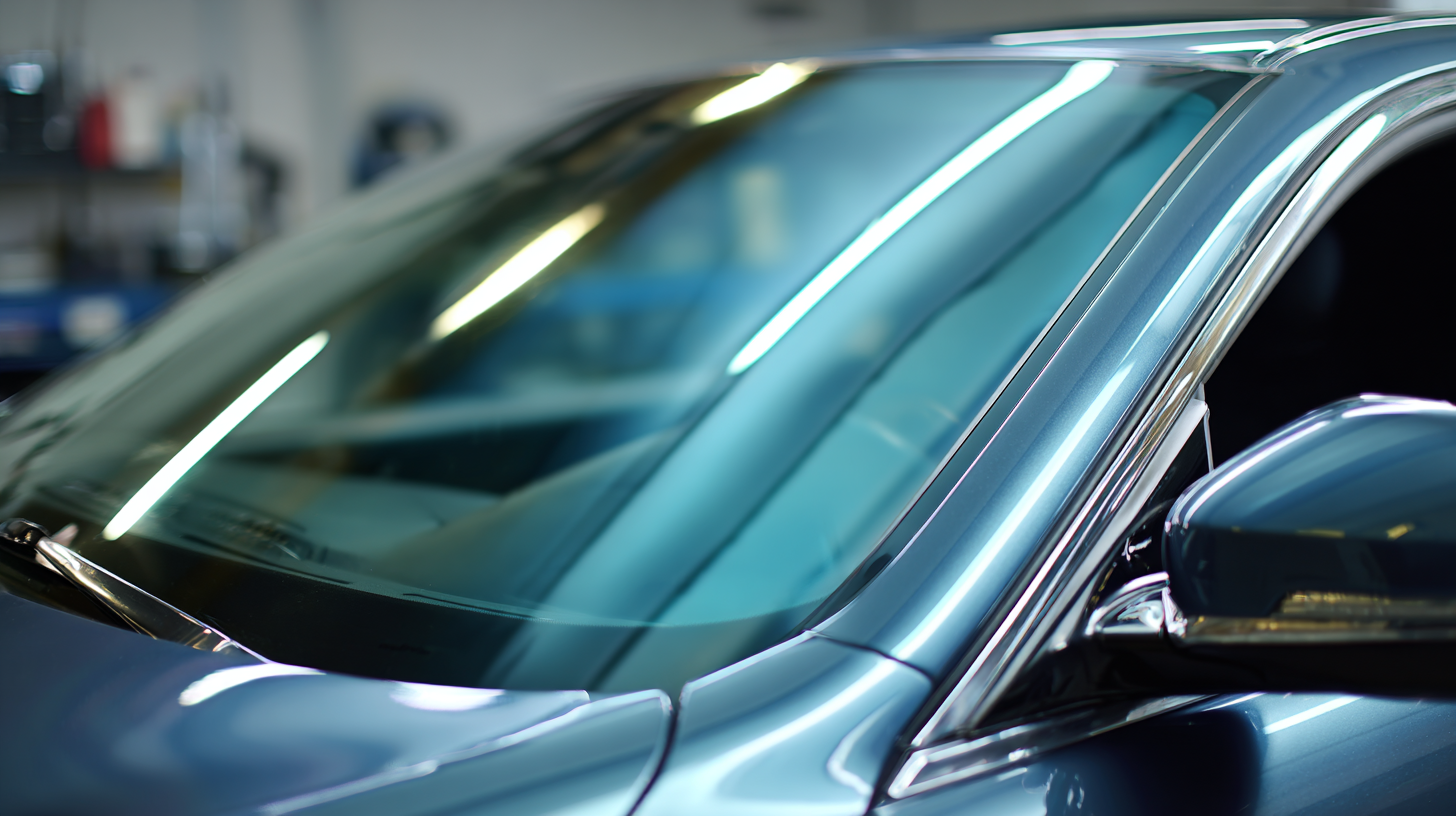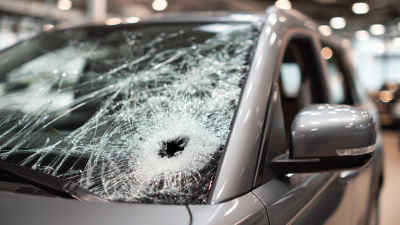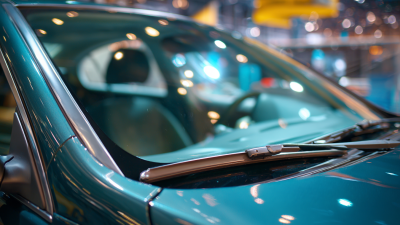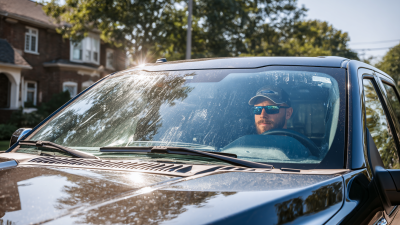How to Choose the Best Automobile Glass for Your Vehicle: A Comprehensive Guide
When it comes to maintaining your vehicle, one of the often-overlooked components is the automobile glass. From windshields to side windows, the quality and type of glass used in your vehicle can significantly affect not only your driving experience but also your safety. Selecting the right automobile glass involves understanding the various types available in the market, their specific functions, and the materials used in their construction. This comprehensive guide aims to help vehicle owners navigate the myriad of options to choose the best automobile glass suited to their needs.
In this guide, we will delve into the different categories of automobile glass, including laminated and tempered glass, and discuss their characteristics, benefits, and potential drawbacks. Understanding these distinctions is crucial for making informed decisions that enhance both the functionality and aesthetics of your vehicle. By exploring the essential factors that influence the selection process—from temperature resistance and shatter resistance to UV protection—readers will gain valuable insights that empower them to ensure their vehicle is equipped with the best possible glass.

Key Factors to Consider When Selecting Automobile Glass for Your Vehicle
When selecting automobile glass for your vehicle, several key factors should be considered to ensure safety, durability, and overall performance. First and foremost, the type of glass plays a crucial role. There are primarily two types: laminated and tempered glass. Laminated glass is typically used for windshields, as it provides better protection against impacts and can hold together even when shattered, minimizing the risk of injury. On the other hand, tempered glass is often used for side and rear windows due to its strength and resistance to breakage.
In addition to the type of glass, quality certifications are vital when choosing automobile glass. Look for products that meet industry standards such as ANSI Z26.1 in the United States orECE R43 in Europe. These certifications assure the consumer that the glass has been tested for safety and performance. Furthermore, be mindful of the installation process; improper installation can lead to leaks, distortions, or other complications. Seeking professional services with experience in automobile glass replacement is highly recommended to ensure a proper fit and optimal performance.
Automobile Glass Selection Factors
Understanding Different Types of Automotive Glass: Windshields, Side Windows, and Backlights
When selecting automotive glass for your vehicle, it's essential to understand the different types available: windshields, side windows, and backlights. Each component serves a unique purpose and comes with distinct features. Windshields provide critical structural integrity and safety, often made from laminated glass that combines an inner layer of polyvinyl butyral (PVB) sandwiched between two panes of glass. This design ensures that if the glass shatters, the pieces are held together, protecting passengers from injury.

Side windows, typically made of tempered glass, are designed to shatter into small, blunt pieces upon impact, reducing the risk of cuts and serious injuries. These windows can often be tinted for privacy and UV protection, adding to the vehicle's aesthetics and comfort. Backlights, or rear windows, can also be made from either laminated or tempered glass, depending on the vehicle's design and safety requirements. When choosing backlights, consider options with defrosting features for enhanced visibility in cold weather.
Understanding these three types of automotive glass will help you make informed decisions when replacing or upgrading your vehicle's glass components, ensuring safety, aesthetics, and functionality are all adequately addressed.
Essential Tips for Ensuring Proper Fit and Installation of Auto Glass
When selecting auto glass for your vehicle, ensuring a proper fit and installation is crucial for both safety and performance. Irregularities in the glass can lead to leaks or even structural issues, so it's important to pay attention to the details.
One essential tip is to choose original equipment manufacturer (OEM) glass when possible. OEM glass is built to the same specifications as your vehicle’s original glass, ensuring a perfect fit. If you opt for aftermarket glass, verify that it meets safety standards and is compatible with your vehicle model.
Another key consideration is professional installation. Always seek experienced technicians who specialize in auto glass replacement. Proper installation involves using correct adhesives and techniques to secure the glass in place. Be sure to inquire about warranty options for both the glass and installation, which can provide peace of mind and protection against potential issues down the line.

Choosing the Right Glass Quality: OEM vs. Aftermarket Options
When it comes to selecting automobile glass, one of the most significant decisions is choosing between OEM (Original Equipment Manufacturer) and aftermarket options. OEM glass is produced by the same manufacturer that supplied the original glass for your vehicle, ensuring a perfect fit and adherence to the original specifications. According to a report from the National Windshield Repair Association, vehicles fitted with OEM glass can maintain their safety features and structural integrity better, as these glasses usually come with the same certifications as the original parts.
On the other hand, aftermarket glass can vary widely in quality. While some aftermarket manufacturers produce high-quality glass that meets safety standards, others may cut corners, leading to potential issues like distortion and reduced visibility. The Automotive Glass Replacement Safety Standard (AGRSS) estimates that up to 30% of aftermarket glass can fail to meet these critical safety standards. Therefore, when considering cost savings, it's essential to keep in mind that choosing subpar glass might compromise safety and longevity, ultimately costing more in repairs and replacements down the road.
Safety Standards and Regulations for Automotive Glass You Should Know
When choosing the best automobile glass for your vehicle, understanding the safety standards and regulations is paramount. Recently, the Auto Glass Safety Council (AGSC) was reaccredited by the American National Standards Institute (ANSI) to set safety standards in the industry. This reaccreditation underscores the importance of adhering to established norms that ensure the safety and reliability of automotive glass products.
In California, for instance, regulations demand that auto glass installers disclose whether a windshield is Original Equipment Manufacturer (OEM) or aftermarket. They must also inform customers about the curing time of adhesives used, ensuring that the replacement glass meets safety specifications. Such measures are vital as they help maintain the integrity of the vehicle’s structural safety. Meanwhile, discussions in Maryland's Senate have highlighted ongoing deliberations on auto glass safety, reflecting a growing emphasis on regulatory oversight in this sector.
The automotive glass market is projected to reach USD 28.3 billion by 2032, fueled by innovations in electric vehicles and smart glass technology. As trends evolve, including advanced driver-assistance systems (ADAS) and improved glass durability standards, it becomes essential to stay informed about these developments to make educated choices regarding vehicle safety features.
How to Choose the Best Automobile Glass for Your Vehicle: A Comprehensive Guide
| Feature | Description | Safety Standards |
|---|---|---|
| Material Type | Laminated and tempered glass | FMVSS 205 |
| UV Protection | Filters harmful UV rays | ASTM E424 |
| Shatter Resistance | Resistant to impact and shattering | ANSI Z26.1 |
| Clarity | Provides clear visibility without distortion | SAE J1003 |
| Installation Standards | Correct and secure installation prevents leaks | FMVSS 212 |
Related Posts
-

Exploring the Top Auto Glass Repair Services in Miami: What You Need to Know
-

Understanding Auto Glass Phoenix Trends and Their Impact on Vehicle Safety Statistics
-

Understanding Auto Glass Repair in Phoenix: Essential Tips for Vehicle Safety and Longevity
-

How the Windshield Doctor Revolutionizes Auto Glass Repair: Insights and Innovations for Drivers
-

Transform Your Ride: Ultimate Guide to Car Glass Fix Techniques for Every Driver
-

How the Windshield Doctor Revolutionizes Auto Glass Repair: Tips for Car Owners
